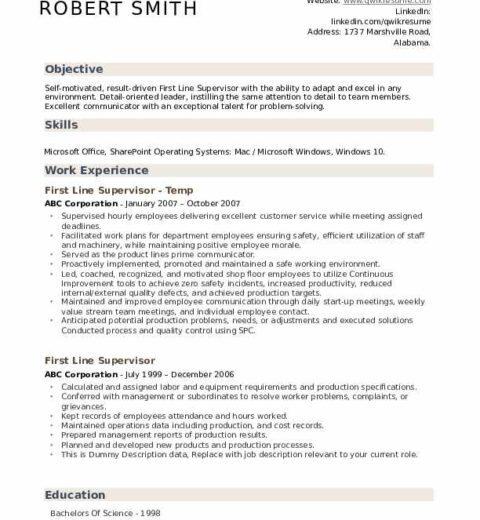In today’s competitive job market, where countless applications flood hiring managers’ desks daily, standing out from the crowd is paramount. The sheer volume of resumes received can create an overwhelming situation for recruiters, often leading to qualified candidates being overlooked amidst a sea of similar documents. Therefore, employing unique strategies to elevate your resume is crucial. The following sections delve into various aspects of crafting a standout resume, each infused with practical tips designed to enhance your employability.
1. Understand Your Audience
Before penning a single word, it is vital to comprehend who will be reading your resume. Tailoring your document to resonate with a specific audience can create a compelling connection. Research the company’s culture, the skills they value, and the specific job requirements. By demonstrating awareness of the organization’s ethos, you subtly position yourself as a compatible candidate. Consider each nuance in language and terminology—mirroring the company’s vision can often be the key to catching a recruiter’s eye.
2. Craft an Attention-Grabbing Summary
The summary section is your first impression; thus, it must be alluring yet succinct. A well-structured summary encapsulates your professional identity, core competencies, and unique selling propositions. Instead of a generic objective, narrate a concise story that reflects your most significant achievements and aspirations. Use compelling language to demonstrate enthusiasm and intent while ensuring clarity and focus. This segment should tantalize readers’ curiosity to delve deeper into your experience.
3. Prioritize Content and Structure
Functionality plays an integral role in resume design. Begin with your most relevant experience and accomplishments, ensuring that the layout facilitates effortless navigation. A clear hierarchy not only enhances readability but also aids hiring managers in identifying pertinent information quickly. Utilize bullet points to articulate achievements and responsibilities effectively. Each statement should begin with an action verb, driving dynamism and maintaining engagement. Avoid clutter; minimalism combined with strategic bolding of critical information can amplify impact.
4. Quantify Achievements
One of the most salient ways to differentiate your qualifications is through quantification. Vague descriptions dilute the significance of your accomplishments; therefore, leverage metrics and concrete data wherever possible. For instance, rather than stating that you “improved sales,” specify “increased sales by 25% over six months.” These figures not only substantiate your claims but also exhibit a results-oriented mindset. Such details convey not just competence but also potential value to prospective employers.
5. Infuse Keywords Strategically
In the digital age, many companies utilize Applicant Tracking Systems (ATS) to filter candidates before human eyes ever see the applications. Therefore, integrating the right keywords relevant to the job description can catapult your resume to the forefront. Scrutinize the job listing and highlight specific skills and qualifications mentioned. Weave these keywords throughout your resume’s sections, particularly in your skills and experience portions, while ensuring the language remains natural and fluid.
6. Design Matters: A Visually Appealing Resume
Your resume is not merely a text document; it is also a canvas that reflects your personal brand. As such, aesthetics play a pivotal role in first impressions. While traditional formats are standard, visually creative resumes can be refreshing—provided they do not compromise readability. Utilize a coherent color scheme and professional fonts to harmonize the presentation. Aligning elements systematically and ensuring ample white space reduces visual clutter. However, maintain professionalism, ensuring that the design complements your content rather than overshadowing it.
7. Tailor for Every Application
No two jobs are the same; thus, a one-size-fits-all approach to resumes is counterproductive. Tailoring your resume for each application might seem labor-intensive, yet it is ultimately beneficial. Highlight experiences and skills that directly align with the job description. Personalization signals to recruiters that you are genuinely interested and invested in the position. Moreover, customized resumes are more likely to pass through ATS filters, enhancing your chances of landing an interview.
8. Incorporate Additional Elements
Incorporating elements beyond traditional work experience can provide a more holistic view of your capabilities. Consider adding personal projects, volunteer experiences, or relevant coursework that demonstrates skills pertinent to the field. Such inclusions can add depth to your narrative and evoke a more engaging portrayal of your professional journey. Additionally, recommendations or testimonials—where applicable—can serve as third-party validations of your competencies.
9. Proofread and Edit Meticulously
A resume riddled with typographical errors or grammatical mistakes undermines professionalism. Take the time to meticulously proofread your document, seeking out even the most minute inconsistencies. Reading it aloud can help identify awkward phrasing, while spell-check tools provide a first layer of defense against errors. Engaging a trusted peer or mentor to review your resume can yield valuable insights and a fresh perspective on the document’s impact.
10. Continuous Evolution
Your resume should not remain static; it should evolve as your career progresses. Regularly updating your resume with new skills, experiences, and accomplishments keeps it relevant. Additionally, reflecting on the lessons learned throughout your professional journey can provide insights that infuse your resume with fresh vigor. This continuous evolution ensures that you remain prepared for new opportunities, equipped with an up-to-date depiction of your professional narrative.
In conclusion, making a resume stand out is less about adhering to conventional norms and more about strategic presentation and thoughtful customization. By understanding your audience, crafting compelling narratives, and presenting information visually and quantitatively, you can carve out a distinctive space for yourself within the expansive landscape of job applications. Ultimately, the goal is to convey an authentic representation of your professional self, piquing curiosity and compelling hiring managers to reach out for further conversation.




